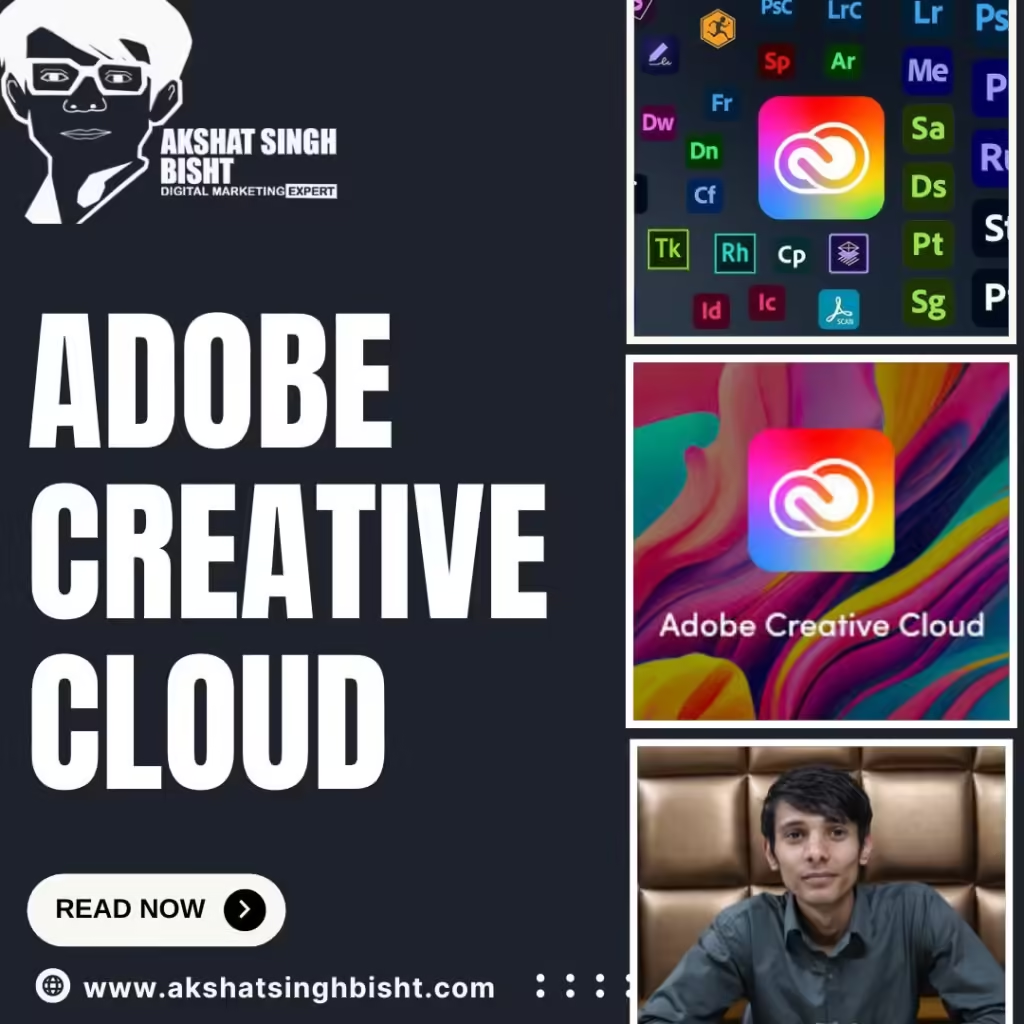Adobe Creative Cloud has revolutionized the way creatives work and express their ideas. It’s not just a collection of software tools; it’s a gateway to endless creative possibilities. Whether you’re a graphic designer, photographer, video editor, or digital artist, Adobe Creative Cloud provides a suite of applications designed to inspire and empower your creativity. Let’s dive into what Adobe Creative Cloud is all about, explore its key applications, and understand how it can transform your creative process.

Adobe Creative Cloud is a subscription-based service that gives you access to Adobe’s extensive suite of creative software. Instead of buying each software separately, you subscribe to Creative Cloud and get access to over 20 powerful applications. These include tools for photo editing, graphic design, video production, web development, and more. Creative Cloud also offers cloud storage, enabling you to work on your projects from anywhere, and collaborate with others seamlessly.
When you think of photo editing, Adobe Photoshop is likely the first software that comes to mind. It’s the industry standard for photo retouching, image manipulation, and digital painting. Whether you’re editing a simple photo or creating a complex digital artwork, Photoshop’s powerful tools and features can help you bring your vision to life.
For vector graphics and illustration, Adobe Illustrator is the go-to tool. It’s perfect for creating logos, icons, sketches, typography, and complex illustrations that can be scaled infinitely without losing quality.
Premiere Pro is a professional video editing software used by filmmakers, YouTubers, and video professionals worldwide. It supports various video formats and offers advanced editing features that make it the preferred choice for creating everything from YouTube videos to feature films.
After Effects is the powerhouse for motion graphics and visual effects. It’s widely used in the film and television industry to create stunning visual effects, animations, and compositing.
Lightroom is essential for photographers. It provides powerful tools for managing, editing, and organizing photos. With Lightroom, you can edit photos in bulk, apply presets, and seamlessly sync edits across devices.
Adobe XD is a powerful tool for designing and prototyping user experiences for web and mobile apps. It allows designers to create interactive prototypes and collaborate with team members in real-time.
InDesign is the industry standard for desktop publishing and layout design. It’s used to create everything from brochures and posters to magazines and books. InDesign offers precise control over typography and layout, making it a favorite among print designers.
Acrobat DC is the ultimate PDF solution. It allows you to create, edit, sign, and share PDF documents. With features like OCR (Optical Character Recognition), you can convert scanned documents into editable text.
With a Creative Cloud subscription, you always have access to the latest features and updates. Adobe frequently releases new tools and enhancements to improve your creative workflow, ensuring you’re always at the cutting edge of creative technology.
Creative Cloud offers cloud storage and syncing capabilities, allowing you to access your files from any device. This is particularly useful for teams working on collaborative projects, as everyone can access the most up-to-date versions of files.
Adobe Creative Cloud applications are designed to work seamlessly together. For example, you can create a graphic in Illustrator and import it directly into Photoshop or After Effects. This integration streamlines the creative process and improves efficiency, enabling you to focus more on creativity and less on technical hassles.
Adobe provides a wealth of learning resources, including tutorials, forums, and user communities. Whether you’re a beginner or an advanced user, you can find resources to help you master the tools and techniques. Adobe’s online community is a great place to get tips, share your work, and connect with other creatives.
Adobe Creative Cloud includes a range of mobile apps that allow you to create on the go. Apps like Photoshop Express, Lightroom Mobile, and Adobe Fresco offer powerful creative tools on your smartphone or tablet, enabling you to work from anywhere.
Adobe offers various subscription plans to suit different needs and budgets. Whether you’re an individual, a student, or part of a team, there’s a plan that fits your requirements. This flexibility ensures that you can access the tools you need without paying for extras you don’t.
Visit the Adobe Creative Cloud website and choose a subscription plan that suits your needs. Adobe offers plans for individuals, students, teachers, and businesses, so you can find an option that fits your situation.
Once you’ve subscribed, download and install the Creative Cloud app on your desktop. This app serves as a hub for managing your Adobe applications and services, making it easy to install and update software.
Use the Creative Cloud app to install the applications you need. You can install and uninstall applications as needed, depending on your project requirements. This flexibility allows you to tailor your toolkit to your current needs.
Take advantage of Adobe’s learning resources to familiarize yourself with the applications. Watch tutorials, read guides, and participate in forums to enhance your skills. Adobe’s website and YouTube channel are great places to start.
Begin your creative journey by launching the applications and experimenting with their features. Whether you’re editing photos, designing graphics, or producing videos, Adobe Creative Cloud provides the tools to bring your vision to life. Don’t be afraid to try new things and push the boundaries of your creativity.
Adobe Creative Cloud is an invaluable resource for creatives across various disciplines. Its comprehensive suite of applications, continuous updates, and integration capabilities make it a powerful tool for unleashing your creativity. By subscribing to Adobe Creative Cloud, you gain access to industry-standard software that can elevate your projects and streamline your workflow.
Akshat’s passion for marketing and dedication to helping others has been the driving force behind AkshatSinghBisht.com. Known for his insightful perspectives, practical advice, and unwavering commitment to his audience, Akshat is a trusted voice in the marketing community.
If you have any questions simply use the following contact details.